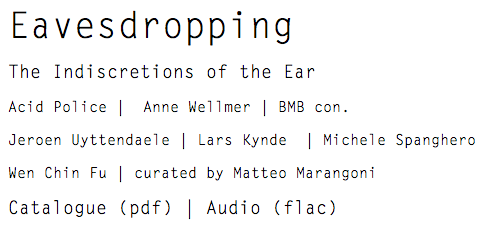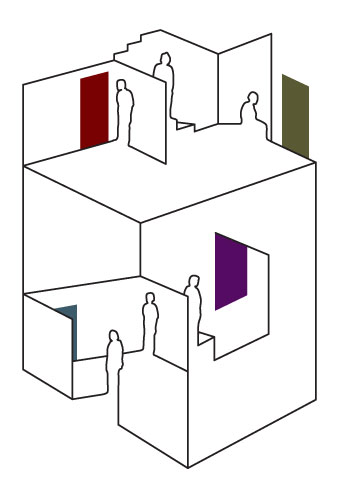
Eavesdropping
The Indiscretions of the Ear
Acid Police
Anne Wellmer
BMB con.
Jeroen Uyttendaele
Lars Kynde
Michele Spanghero
Wen Chin Fu
curated by Matteo Marangoni
Villakabila
Stichting Centrum
Neural magazine
Stroom Den Haag
ISBN 978 - 90 - 818346 - 0 - 5
Attempting to contain sound inside buildings is like trying to hold water in clasped hands. In terms of acoustic isolation, architectural barriers often fall short of their warrants. This is just more evident if we compare the indiscretion architecture allows the ear to the privacy it grants to the eye. Sound tends to spill out of charted borders, it ignores concepts of property, it is a perpetual trespasser. While propagating through materials of varying density, sound changes its morphology. Gradually becoming farther removed from its original source and less recognizable it eventually turns into background noise. Before fading into hum or silence, along its dissipative course it carries information across to places that were never intended to be reached, and is picked up by more or less attentive ears. The fear of being constantly watched, epitomized by George Orwell in 1984, has always been true in the acoustic domain. At any time, there might be someone listening behind a door, on the other side of a wall or across the hallway. Eavesdropper is a medieval English word referring to a person illicitly listening to a private conversation or activity that is not meant to be heard. This type of indiscretion, a “spying with the ears”, has been regulated for centuries by both moral and legal sanctions. But listening to others, whether allowed or not, is something we cannot avoid doing.

